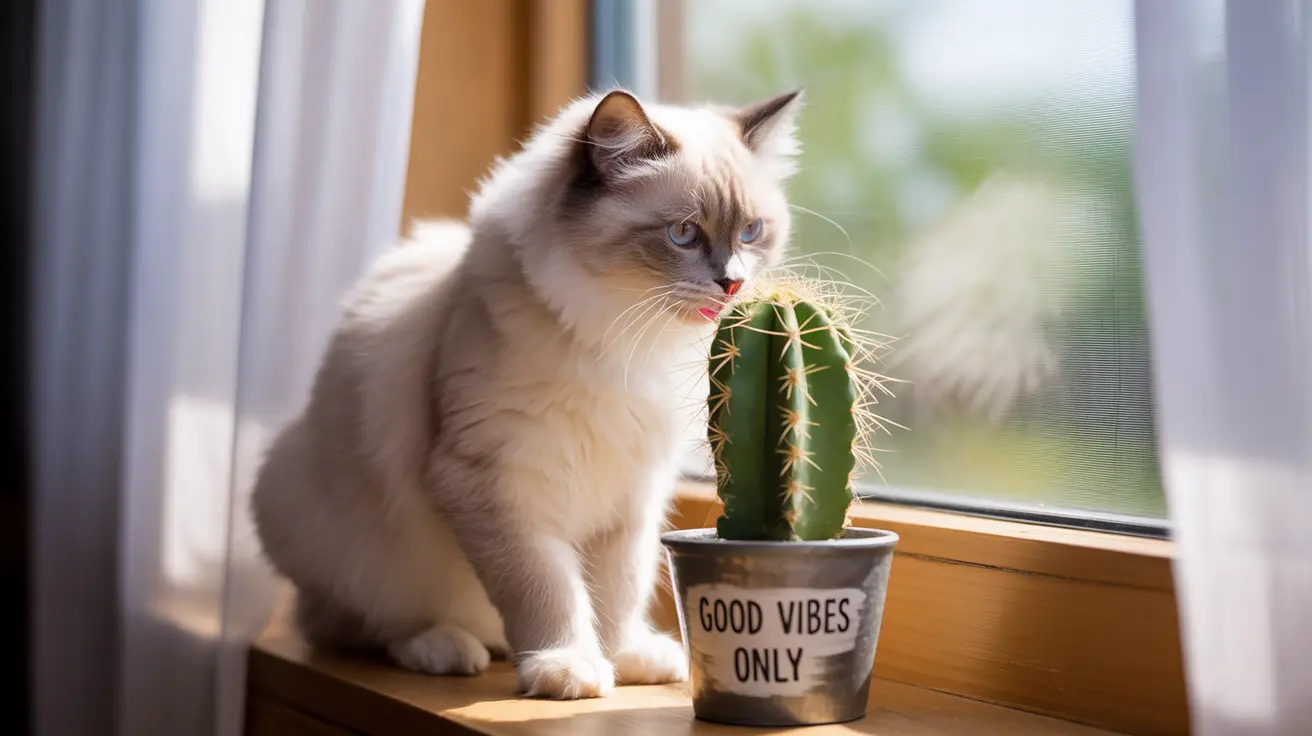True Cacti vs. Toxic Look-alikes
While genuine cacti are generally non-toxic to cats, many plants marketed as "cacti" are actually succulents that can be dangerous. The Christmas cactus, for example, is completely safe for cats. However, plants like the pencil cactus (Euphorbia tirucalli) and jade plant (Crassula ovata) can cause serious health issues if ingested.
- True cacti have areoles (spots where spines emerge)
- Toxic succulents often have smooth, waxy surfaces
- True cacti typically have thick, fleshy stems
- Harmful succulents may produce milky sap when damaged
Physical Dangers of Cactus Spines
Even non-toxic cacti can pose physical risks to curious cats. Cactus spines and glochids (tiny barbed bristles) can cause:
- Puncture wounds in paw pads
- Mouth and throat injuries
- Skin inflammation and infection
- Eye injuries if cats get too close
Signs Your Cat Has Encountered a Cactus
Watch for these symptoms if you suspect your cat has interacted with a cactus:
Physical injury signs:
- Pawing at the mouth or face
- Visible spines in fur or skin
- Swelling or redness
- Reluctance to eat or drink
Toxic succulent ingestion signs:
- Vomiting
- Diarrhea
- Excessive drooling
- Lethargy
- Loss of appetite
Creating a Cat-Safe Environment
To protect your cats while enjoying your cacti collection:
- Place cacti in hanging baskets or high shelves
- Create designated plant rooms cats can't access
- Use protective barriers around plant displays
- Provide cat-safe alternatives like cat grass
- Keep toxic succulents out of your home entirely
Emergency Response and Treatment
If your cat has been injured by or ingested a cactus:
- Carefully remove visible spines with tweezers
- Clean any wounds with mild soap and water
- Monitor for signs of infection
- Contact your veterinarian if:
- Multiple spines are embedded
- Wounds appear infected
- Your cat shows signs of toxic plant ingestion
- Breathing or eating is affected
Frequently Asked Questions
Are most cacti safe or toxic to cats if ingested?
Most true cacti are not toxic to cats if ingested. However, the physical structure of cacti, including spines and fibrous flesh, can cause mechanical injury and digestive upset.
Can cactus spines injure my cat even if the plant isn't poisonous?
Yes, cactus spines can cause significant injury to cats regardless of toxicity. Spines can puncture skin, embed in paw pads, and cause serious injury to sensitive areas like eyes and mouth.
Which common cactus-like succulents should I avoid because they are toxic to cats?
Avoid Euphorbia species (like pencil cactus), Kalanchoe, and jade plants (Crassula). These toxic succulents can cause severe reactions including vomiting, diarrhea, and in some cases, serious illness.
What symptoms should I watch for if my cat chews or eats a cactus or succulent?
Watch for pawing at the mouth, drooling, vomiting, diarrhea, lethargy, and loss of appetite. With toxic succulents, also monitor for more severe symptoms like tremors or collapse.
How can I prevent my cat from getting hurt by or eating cacti and succulents at home?
Place plants in inaccessible locations, use hanging baskets, create physical barriers, and provide alternative safe plants like cat grass. Consider removing problematic plants if your cat shows persistent interest.
Remember, while most cacti aren't toxic, prevention is always better than treatment. Create a safe environment that allows both your cats and plants to thrive without risk of injury or illness.






